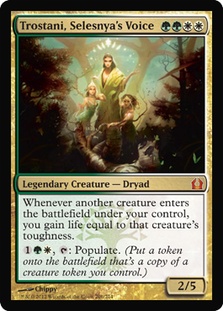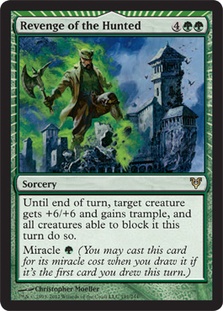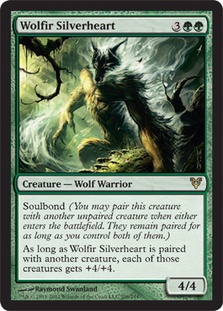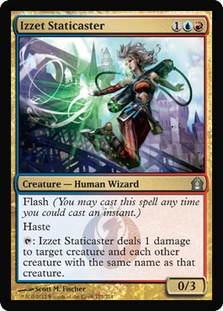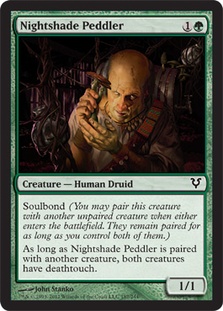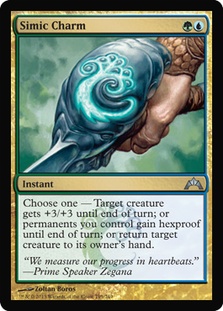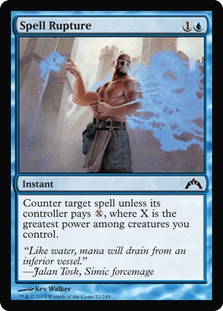To a great extent, we already know a lot about the Standard metagame right now. It’s extremely fast and fairly unforgiving to control decks. In an extreme case, R/G Aggro can put eleven points of power on the board on the second turn of the game.
The old days of cycling Eternal Dragon for value?
To quote a media icon, “Ain’t nobody got time for that.”
Mainstream Format Evolution
The evolution of the format really began at Pro Tour Gatecrash and continued through Grand Prix Quebec City and various StarCityGames.com Open and Classic tournaments.
At PT Gatecrash, we saw some Jund, Naya, Esper, and U/W/R “Flash” or “Fish” or whatever it’s being called at the moment. The Aristocrats also made its debut alongside Melissa DeTora’s Wolf Run Bant.
At GP Quebec City, there was a lot of Naya, Jund, and copies of The Aristocrats and Reanimator in the Top 8. Both aggressive and midrange versions of Naya and Jund were present.
At SCG Standard Open: Las Vegas, the same archetypes once again emerged, with U/W/R taking three of the Top 8 slots and other aggro decks filling in the gaps (notably absent: The Aristocrats). Bant Control also evolved further in this event to incorporate red, becoming Four-Color Control.
Simultaneously, halfway across the country at SCG Classic Series: Louisville, a few new archetypes popped up, including a “Big Bant” list with Prime Speaker Zegana and Angel of Serenity, a riff on Brian Kibler G/B Ooze deck, and a Bant Hexproof list. The usual suspects (Naya and Jund) also were present in the Top 8.
Where does that leave us? It looks like the format has some significant pillars:
Aggro
Jund
Saito Naya
The Aristocrats
R/G
Other (G/B Ooze, Hexproof)
Midrange
Jund
Naya
U/W/R
Reanimator
Control
Wolf Run Bant
Esper
Other (Prime Speaker Bant, Four-Color)
Of the control lists, only Esper is really evocative of the old-school control motif, with the Bant-derived lists running a number of creatures and playing less of a draw-go game in favor of Thragtusks.
So that’s it, right? We can just grab one of those lists and play in Indianapolis this weekend if we don’t have a lot of time to test, or we can tweak one of the existing archetypes if we do…
Or we can take an additional look at this relatively new format to see if there are any gaps that we can exploit. Even with the reduced data available from Magic Online, information from Daily Events, especially the 4-0 decks, is always a valuable place to start when looking for fresh ideas.
Potential New Strategies for Standard
G/W Trostani
Let’s begin with some small steps away from the mainstream. Pyr0prep ran the following G/W Aggro list to a 4-0 finish on March 3rd. While many of the cards shouldn’t surprise us, several of them should give us pause.
Creatures (29)
- 3 Arbor Elf
- 3 Avacyn's Pilgrim
- 4 Strangleroot Geist
- 2 Restoration Angel
- 4 Silverblade Paladin
- 4 Wolfir Silverheart
- 4 Loxodon Smiter
- 2 Trostani, Selesnya's Voice
- 3 Centaur Healer
Lands (23)
Spells (8)
Sideboard

It has been a while since Trostani, Selesnya’s Voice and Wolfir Silverheart have seen play over the much more ubiquitous Thragtusk. However, as a 2/5 creature that potentially generates more than five life if it survives for a turn or two, Trostani may have a place in combatting the excessively fast aggro decks that currently exist. The fact that it comes out a turn faster than Thragtusk doesn’t hurt either, although it doesn’t function as effectively as an aggressive creature. We might also note that no cards in this deck work with the populate mechanic attached to Trostani; her power level increases dramatically when she can tap to gain life and increase board presence.
Wolfir Silverheart was the go-to green five-drop before Thragtusk, powering the Block Constructed G/U Hexproof deck that took Pro Tour Avacyn Restored by storm. In an era with little burn and fewer Geralf’s Messengers but more and bigger aggressive creatures like Flinthoof Boar and Dreg Mangler, it may once again be time for Magic’s second favorite Werewolf to shine.
Revenge of the Hunted is an interesting card in a list like this. In conjunction with a card like Silverblade Paladin, it is capable of winning the game on the spot, but the fact that it must be “miracled” to be really effective should lead us to question whether it is really better than Giant Growth. There are certainly situations where it is amazing, but it seems like it would be very frustrating to have this stuck in our hand with fewer than six mana available.
RUG Peddler
Although the cat may be out of the bag on this next list, it’s still worth mentioning. Damaja’s RUG Peddler list is a blast from the recent past that incorporates some new cards, in particular Prime Speaker Zegana, who is very good friends with Thragtusk.
Creatures (26)
- 3 Borderland Ranger
- 4 Huntmaster of the Fells
- 3 Restoration Angel
- 4 Nightshade Peddler
- 1 Wolfir Avenger
- 1 Yeva, Nature's Herald
- 4 Thragtusk
- 3 Izzet Staticaster
- 3 Prime Speaker Zegana
Lands (25)
Spells (9)

This deck features the two-card combo of Izzet Staticaster and Nightshade Peddler, which work together to eliminate any creature-based threat very efficiently. Izzet Staticaster is actually good on its own as well against a variety of creatures in the format. In conjunction with the now typical combination of Restoration Angel and Thragtusk and a few other pieces of removal, this deck looks to be quite hostile to most aggressive decks.
It does have a few strange card choices, though. Although this deck can draw an abundance of cards using Prime Speaker Zegana, it is unclear whether certain individual cards have a lot of utility in this particular list. A singleton Dissipate is reasonable, but I can’t think of a time when we’ll be pounding the tops of our deck waiting for a 3/3 for 1GG (Wolfir Avenger). And although Yeva, Nature’s Herald allows for some interesting synergy with Nightshade Peddler, it seems like both of those creatures would be better off as additional copies of Pillar of Flame.
This deck has a very strong mid-to-late game but needs to survive until that point. At the same time, there are a lot of things to like about the sideboard, but we might consider testing some additional copies of Negate or Dispel to ensure that our creatures aren’t outmatched by our opponents’ Sphinx’s Revelations. Since we’re splashing white already for some sideboard cards, we might consider adding a few copies of that game-winning haymaker ourselves.
Bant Delver
Next up, let’s take a look at the Bant Delver list that made a showing last week courtesy of spence0016.
Creatures (15)
Lands (22)
Spells (23)

While running a number of cards that are very familiar to the format (we’re looking at you, Snapcaster Mage), this list also marks the competitive Standard debuts of a number of interesting choices.
There are times when this deck feels a lot like the U/W Delver decks of pre-rotation Standard. If we drop a Delver of Secrets on the first turn and flip one of our 23 spells, then Spell Rupture is a Mana Leak and we’re playing a very familiar game indeed, with Unsummon as the understudy to Vapor Snag.
While it doesn’t have a lot of ways to evolve, Cloudfin Raptor plays the role of Delvers five through eight, and it actually gets very big quickly in the event that we play and attack with a Geist of Saint Traft, which can evolve the Raptor up to a 4/5 thanks to the Angel trigger. In a format where Giant Growth was in a deck that won a Grand Prix, Simic Charm is far from the worst choice in the world, and its modular nature helps protect the early threats from spot removal.
This deck is more card order dependent than the original Delver list because of the situational nature of Spell Rupture and Cloudfin Raptor, and the sideboard may need to be tweaked to fit the current metagame. But the “Delver” archetype is famous for its power level, and this may be an important stepping-stone to a new archetype.
A Brief Summary
Because I haven’t been able to extensively playtest with any one of these three decks in particular, I cannot personally recommend that we pick them up card-for-card and play them in the SCG Standard Open this weekend. At the same time, if we have time to playtest and tweak these lists, they all have the potential to be contenders—this doesn’t mean that they will be but that they could be.
If we have the time and energy to work on a new list, there is always an advantage to playing an unknown deck. At the same time, for those of us with less time to prepare, we may be better off grabbing a list that has known staying power and has already made the Top 8 of a large tournament.

